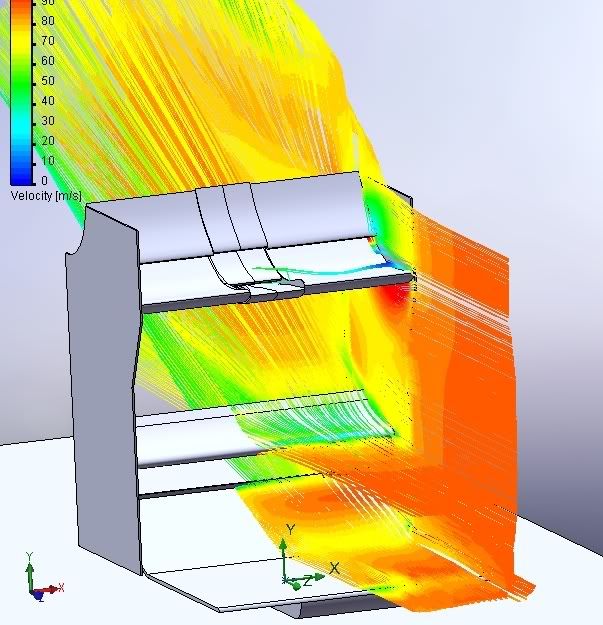
I made a small change so ignore this gray stripes.

The quality is quite bad, but when I save pictures in .bmp format, I have to wait a lot during upload.
now do you notice the difference?

Are you sure this will reduce drag and improve DF? if so ill adapt the wing design and run it on our next test.godlameroso wrote:I know it's a diffuser really but I'm talking about having the leading edge profile look similar the front lip of the car. Sure the air is faster near the end-plates, and it's also less stable. It's a compromise really, do you want a more stable aero then you add the slots on the end plate, or you can droop the wing at the ends, the end goal being to have a more uniform laminar flow across the wing. That's why Renault fiddled with a W wing for a bit, they thought the extra surface area near the endplates would help keep airflow attached to the wing a bit longer, to match what they were getting in the central section. I think they just got the shape wrong, so did Williams.

Interesting, I'll look into a solution for the next iteration of the wing, although that might not be for a while.godlameroso wrote:Depending on the shape it will either increase drag and not downforce, increase downforce and drag(although slots on the endplates can ameliorate this drag somewhat), or do neither. The simpler the shape of the aero the less drag it will produce, as a general rule of thumb. The problem comes in thinking that 90 degree angles are simple, and unfortunately the wing and endplate meet at roughly that angle. (they're anything but simple especially from a mathematics standpoint). Unfortunately the rules forbid the use of a more simple angle, if the rear wing end plates connected to the wing at a 60 degree angle, instead of directly perpendicular to it, you would most likely notice a reduction in drag.

Interesting find on your idea, which you may or may not be aware of.godlameroso wrote:Depending on the shape it will either increase drag and not downforce, increase downforce and drag(although slots on the endplates can ameliorate this drag somewhat), or do neither. The simpler the shape of the aero the less drag it will produce, as a general rule of thumb. The problem comes in thinking that 90 degree angles are simple, and unfortunately the wing and endplate meet at roughly that angle. (they're anything but simple especially from a mathematics standpoint). Unfortunately the rules forbid the use of a more simple angle, if the rear wing end plates connected to the wing at a 60 degree angle, instead of directly perpendicular to it, you would most likely notice a reduction in drag.








Definitely looks that way, but the concept shows promise.wesley123 wrote:you got a little bit of flow seperation going on it seems?


We used ideas from your wing, because, well, they're sensible and in theory work!ringo wrote:wing looks like my wing.
Watch it guys.
Anyway may i see a screen capture of the force results, average, lowest, highest.
Would also recommend making a diffuser to get a better performance representation.
This was from 2010, so it doesn't relate to today/s wings but you get the idea.


What wave in the nose section?Byronrhys wrote:I'm curious about the wave in the nose section Ross and Sam were talking about... you guys simulate it yet?